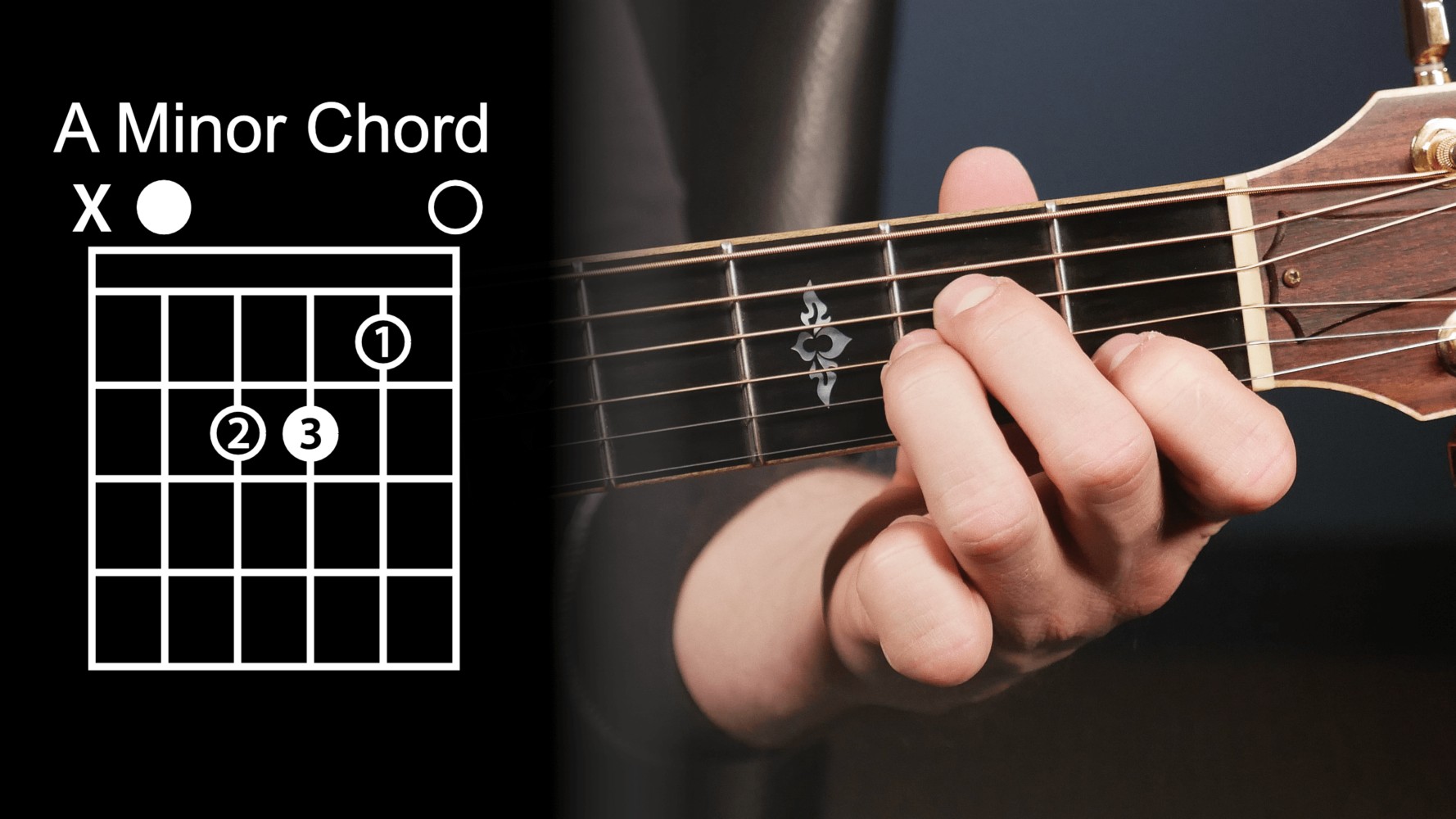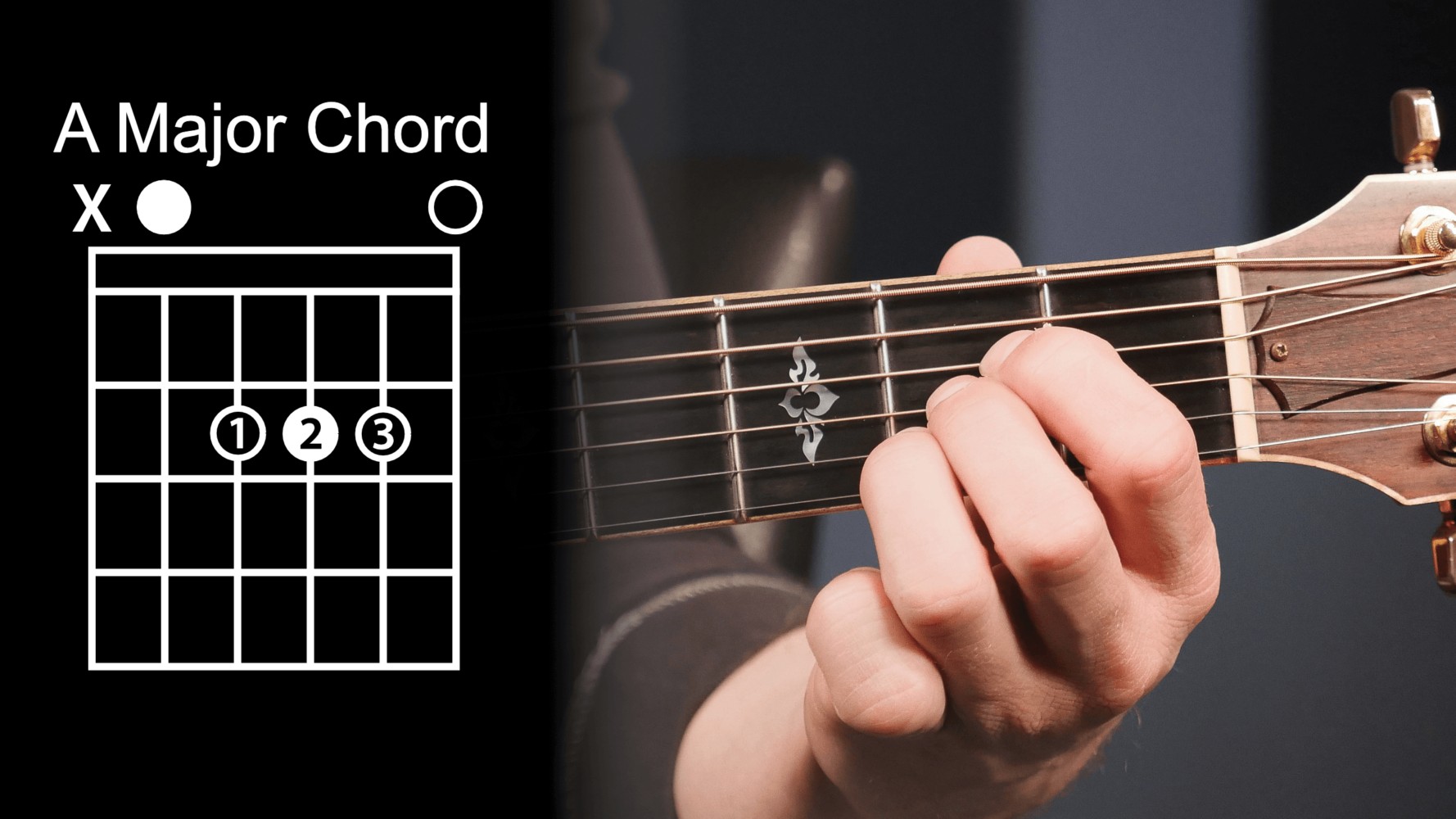As a follow up to my previous post on teaching your kids to love music, I decided to take things a bit further and "teach" you a few basic guitar chords.

You will be able to use these chords to play countless kiddie songs (hmmm, great idea for my next post), sing along with them and spend quality time with the kids while conveying your appreciation of music.
The chords you'll be learning are all beginner-friendly "open chords", meaning they utilize open strings. We'll learn both major and minor chords. Without getting technical about chord qualities, just know that major chords are happy sounding chords, while minor chords are gloomy in nature.
Let's get started!
I'll show you the chord diagram and hand position of each chord. If you need help deciphering the chord diagrams, here is a video on just that:
E major chord
The first chord we'll learn is the E major chord. You'll be strumming all of the strings with this chord. Note that it's a major chord, thus happy sounding.

E minor chord
Next we'll have the minor version of the E chord. All you need to do is take a finger away and you'll arrive at the E minor. Can you hear the faint gloominess of this chord as compared to the E major?

A minor chord
Now let's move on down a string to the A chords, starting with the A minor. The fingering is the same as with the E major, just on higher strings. The A minor is a minor chord, so again, it's gloomy. Oh, and you only strum 5 strings with this chord. Try not to strum the lowest string.

Now if you want to have a bit of fun, try changing between the A minor and E major. The hand position is the same, just move everything over by 1 string.
Yes, you're already playing latin music :-)
A major chord
Next up is the A major chord. This one is a bit harder, since you have to cramp several fingers onto adjacent strings at the same fret. Don't expect to have this one mastered overnight.

You can also use your middle finger, ring finger and little finger instead of the fingering shown above. Try it that way as well, see which one you like better.
D major chord
The D major is a real treat for most beginner player. It looks complicated, but your fingers will get used to the placement rather fast. Make sure you only strum the highest 4 strings with this one. The D major is a very elegant chord for me, I love how it rings out.

C major chord
The C major might be a bit difficult at first, while your fingers aren't used to spanning 3 frets at one time. You'll be strumming the higher 5 strings with this one.

F major chord
The F is a chord most newbies dislike passionately, but don't worry. This version is simpler than the normal F major chord, it's very similar to the C major. Make sure you don't strum the lowest 2 strings though. It's ok to strum the open high E string if you like, it turns the chord into an F major 7.

G major chord
Our last chord will be the G major. You'll be strumming all of the strings again, just like with the E chords we covered at the beginning.

And there you have it ladies and gentleman.
After you learn how to play these 8 chords, you'll literally be able to play thousands of songs.
Of course, you won't be able to learn them overnight. Getting your fingers used to these chord shapes takes a bit of practice, but you'll get there. If you need a bit more guidance on changing in between chords and strumming, have a look at these beginner guitar lessons.
If it gets hard, remember that even the best players were beginners at some point. Learning these beginner chords will take a maximum of a few weeks and it will be so very worth it, trust me.
Your kids will be singing along with your songs, dancing and jumping to the music you make in no time.
Keep a look out for my next post on beginner guitar songs your kids will love. They will use the chords you're learning here.
This post comes from the TODAY Parenting Team community, where all members are welcome to post and discuss parenting solutions. Learn more and join us! Because we're all in this together.
